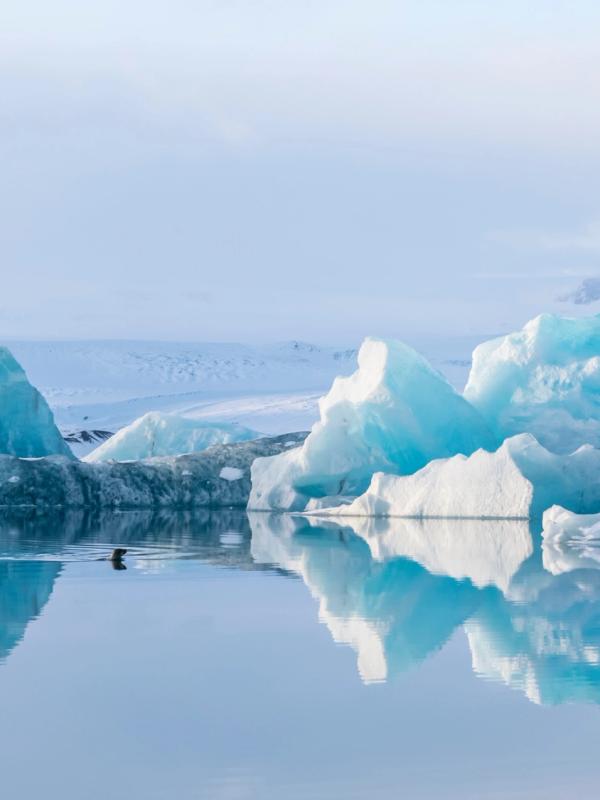
A Winter Ring Road Itinerary for Campervans in Iceland
Embark on a magical winter adventure through Iceland's enchanting landscapes with our carefully crafted Ring Road itinerary designed specifically for campervans. Navigating the snow-kissed landscapes of Iceland is made effortless with the comfort and flexibility offered by a camper van Iceland rental. Our fleet of winter-ready campervans ensures a cozy and secure haven as you traverse the captivating Ring Road. From the otherworldly beauty of the Jokulsarlon Glacier Lagoon to the geothermal wonders of Myvatn, our camper van rental services provide the ideal mobile base for your winter road trip.
This article will outline an ideal itinerary for traveling the Ring Road in a campervan during the winter. The weather during this time is volatile, and snowstorms can easily close down roads and mountain passes, but for when that does happen, we’ve done our best to suggest alternative options for winter adventures. Most importantly, we’ve also listed the best winter campsites in Iceland for you to stay at with your campervan. Take this itinerary with a grain of salt, adapt it to suit your plans, and most importantly, stay safe and enjoy yourself!
Please read Winter Camper in Iceland for information on driving, safety, what to pack, and weather conditions in the winter. It will help prepare you for your winter campervan trip in Iceland.
Campers with heaters for the nights are recommended for this time of year. Check out our wide selection of campers in Iceland.
Winter Planning for Iceland
While this itinerary will do its best to provide good backup plans in case the weather starts to act up, the ring road reaches a point where you can only move forwards or backwards. Make sure to always keep an eye on the weather forecast and road conditions during this season, and we suggest also checking in with Safe Travel. If you ever have any questions while out on the road, don’t hesitate to contact us.
Day 1: The Golden Circle
Start your winter campervan trip in Iceland the classic way: with a trip around the Golden Circle. Thingvellir National Park under its winter guise is still beautiful, the erupting Geysir never freezes over, and while the winters near the highlands are tough in Iceland, they never completely stop such a powerful waterfall as Gullfoss. Try not to make your day too ambitious beyond this, as the daylight hours are very short. Hitting up these three big sights in one day will probably use it all, but if you got an early start, there might be time for an evening dip at the Secret Lagoon in Flúðir. Other than that, here are the campsite options in the area for winter.
Skjòl Campground is 5 minutes’ drive east of Geysir, and a very good option for a winter night in the campervan. If it’s too cold to cook outside, or the weather isn’t cooperating, there’s a restaurant that dishes up delicious pizzas, and the bar area is open late and is generally has a good atmosphere no matter the time of year, with plenty of locals, good music and friendly staff. The other option is the campsite out the back of Úthlíð Cottages, 10 minutes’ drive west from the Geysir. Tall trees protect campers from the worst of the wind, and there’s also a restaurant at this accommodation open every day until 8pm.
However, if you’re keen to keep driving during the late afternoon, you’ll save yourself a big drive on day 2 if you continue towards the south and camp at Hotel Fljótshlíð (also mentioned below in the alternative route) near the town of Hella.

The Alternative: Towards the South
Are blizzards in the Golden Circle getting you down? Head straight towards the south coast, passing through Hveragerði and Selfoss. If the weather isn’t too bad in the southern, you can duck up to Flúðir and visit the Secret Lagoon, a geothermal hot spring that’s well worth a stop. If not, you can continue along south enjoying the landscapes, maybe a few museums and town pools, before shooting off route 261 towards the year-round campsite at Hotel Fljótshlíð. There are warm showers, cooking facilities, and a brilliant restaurant for those lazy nights, but in general this part of Iceland doesn’t see many visitors. Take a slow drive or hike through the surrounding area to enjoy some of those classic winter landscapes.
Day 2: Iceland’s South Coast
After waking up at your chosen campsite, drive one of the many roads heading south that link up with Route 1 (or continue along if you’re already in the south). The south coast of Iceland is one of the most popular areas in the country and with good reason. This is where you’ll find Seljalandsfoss and Skogafoss waterfalls, epic black sand beaches, and the gorgeous glaciers Eyjafjallajökull and Mýrdalsjökull, as well as many other legendary landscapes. However, the two main campsites along the route at Vik and Kirkjubæjarklaustur are closed after the 31st of October – the next campsite along route 1 is at Skaftafell Nature Reserve, a long drive away.
The main sights along the south coast are Seljalandsfoss, Skogafoss, the abandoned DC plane on Sólheimasandur beach, Reynisfjara Black Sand Beach, Dyrhólaey Peninsula and Vík. There’s too much to squeeze into one day, so we recommend stopping off at the waterfalls, Reynisfjara Black Sand Beach and Vik before tackling the 2-hour drive to Skaftafell and your campsite for the night. If you’re turning around at the Glacier Lagoon, you can visit the sights you missed on the way back.

The Alternative: Reykjanes Peninsula
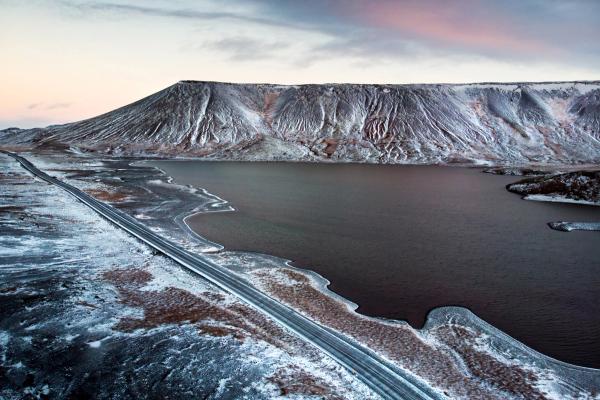
South Iceland might be one of the most beautiful areas of the country, but it’s also a very volatile place. The weather here can turn at the drop of a hat, and the fact that there’s just one road that goes along means that if it gets blocked or closed, there’s absolutely no way to pass. If you’re unlucky with your timing and bad weather blows in closing travel in the area, don’t fret – we’ve got you covered. A great alternative is to backtrack a little bit and drive towards the Reykjanes Peninsula because there’s much more to see in this moon-like peninsula other than the Blue Lagoon. Go for a drive around the awesome lake of Kleifarvatn, stopping off at the Krýsuvík geothermal area and the last Iceland volcano eruption in Geldingadalir before driving down to the coast for some more exploring.
The campsite at Grindavík is brand new and has some of the best facilities in the country – a great option for camping during the winter
Day 3: Skaftafell and the Jökulsárlón Glacier Lagoon
If you have made it all the way to the campsite at Skaftafell, it’s time to enjoy the area. Check at the Skaftafell information center to see how the trails are (top tip: bring your own crampons, as they will more than likely recommend you need some to tackle the trails). Usually, you can make it up to see the Svartifoss waterfall, and the trail that leads to the nearby glacier tongue is accessible as well.
The Jökulsárlón Glacier Lagoon and Diamond Beach are only an hour up the road. The winter freeze means that there’s less movement from the glacial ice in the lagoon, but it’s still gorgeous. Be careful at the edge as it can get quite slippery, and never attempt to go out onto the ice. This is also the time of year when ice cave tours are available underneath the glacier, and many leave from the information center at Jökulsárlón. If you do decide to go on this excursion, or attempt any other glacier activities, make sure you book in advance.
We recommend camping in Höfn for the night. While the facilities aren’t the greatest in the country, this small town is still a hive of activity during the winter thanks to all the tour guides making this their home for the ice cave season. Restaurants and cafés around town are open (Höfn is well-known for having the best lobster in the country), and it’s an atmospheric little travel hub.
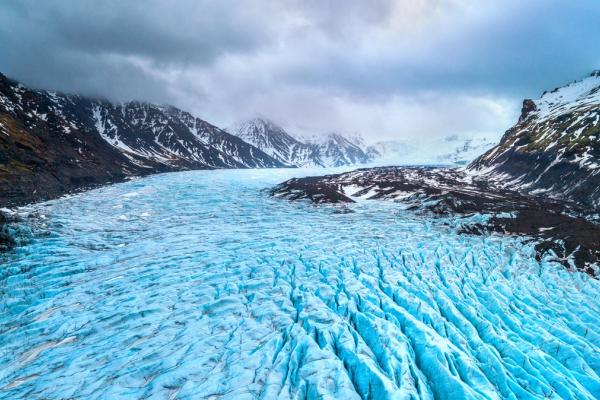
The Alternative: Backtrack Along the South
If bad weather blows in whilst you’re camping in Skaftafell, hindering your way forward towards Jökulsárlón, unfortunately, there are not many easy alternatives. This is usually the point of no return for ring road trips, so if you’ve managed to get here and can’t go forward, you might have to call off your plans for looping the ring road and backtrack along the south.
But don’t worry, as you can then visit the sights along the south that you skipped and instead spend more time in the areas closer to Reykjavik, namely West Iceland and the Snæfellsnes Peninsula. Frequent changes of plans are just part of winter travel in Iceland. If you’re ever worried about the weather conditions, don’t hesitate to contact us to discuss the best options for your winter campervan trip and how to proceed safely.
Day 4: The East Fjords
East Iceland is a beautiful region, and one where instead of big hitting attractions, it’s the mountains and fjords themselves that people come to see. In the winter, it’s also one of Iceland’s quietest places. A lot of the small towns that are dotted along the fjords are even slower than usual, but still make for great pit stops to charge up with coffee and pastries.
Epic winter landscapes can be seen on a drive around the Lagarfljót lake southwest of Egilsstaðir, and there’s a brand-new hot spring nearby called Vök Baths. Situated a short drive out of Egilsstaðir, it’s easy to spend a few hours soaking in the water here: elegant floating hot tubs have been built out on top of a lake, making use of the natural hot springs that bubble up from the bottom, all of it surrounded by beautiful hills. Set yourself up at the well-equipped campsite in Egilsstaðir and enjoy the warm vibes inside the Tehúsið café and bar on site.
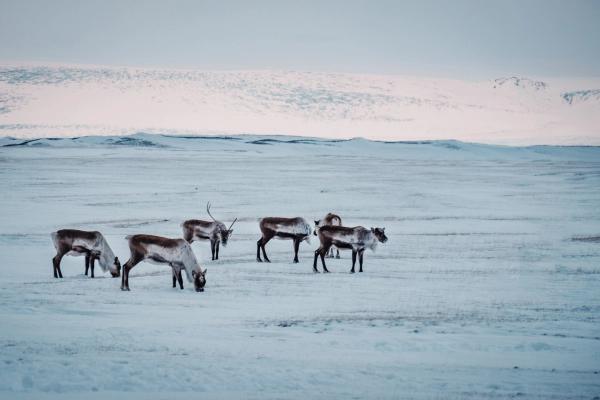
Day 5: Dettifoss and Lake Mývatn
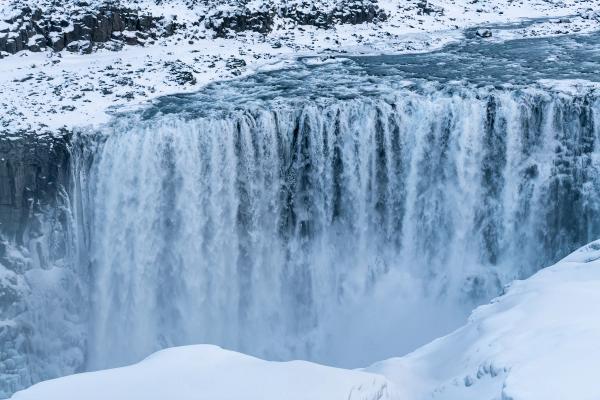
Waking up in Egilsstaðir, it’s time to make the long drive towards north Iceland. It’ll take you about 2 hours to arrive at Dettifoss, the most powerful waterfall in Europe. Because it’s winter, don’t take Road 864 (it’s likely closed anyway), but instead drive up the western side of the canyon along Road 862. This has recently been paved and is an easy drive all the way up to the parking area where you can walk along the paths towards the waterfall. Again, like in Skaftafell, it’s great to have your own crampons here because the paths can be icy.
Afterwards, continue the drive towards Lake Mývatn. In the winter this area is magical; the highly volcanic region means that there’s a lot of contrast in the landscape here. Make sure to stop at the Hverir geothermal area (you can’t miss it), where bubbling mid pits and steaming fumaroles on the orange earth make this place feel like you’re on another planet.
Around Lake Mývatn, check out the Game of Thrones hot spring cave Grjótagjá and the craters of Skútustaðagígar. The best option for camping near Lake Mývatn in the winter is at Vogar Campsite, where you’ll find indoor showers, bathrooms, and a kitchen for cooking. Electricity hook-ups are also available.

Day 6: Akureyri and the North
Spending some time in the capital of the north during winter is always fun. While it’s one of the biggest cities in the country, it still feels almost rural. For what to see and do during your stay here, check out our city guide to Akureyri for campers. A campsite is open year-round just south of the city (Hamrar) if you decide to stay here for the night.
If you decide to continue through the north, then the next campsite to stay at is at Blönduós. There aren’t a whole lot of big sights to see along the way, but that doesn’t mean there isn’t anything at all. Make a detour south of Varmahlíð to check out the waterfall Reykjafoss and take a dip in the nearby hot spring Fosslaug (GPS coordinates: 65°29’44.6″N 19°22’55.6″W – there are no change rooms or facilities here). Alternatively, head north to the town of Sauðárkrókur where you can find 1238: The Battle of Iceland – one of the coolest museums in the country. It’s here where you can learn about the battles that Vikings had during the Settlement Age of Iceland, but the coolest part is the virtual reality headsets that let you take part in the most famous Viking battle in Icelandic history.
At Blönduós there are plenty of options to eat out across the road from the campsite. Grab yourself one of the famous Icelandic hot dogs from the service station or opt for one of their juicy burgers.
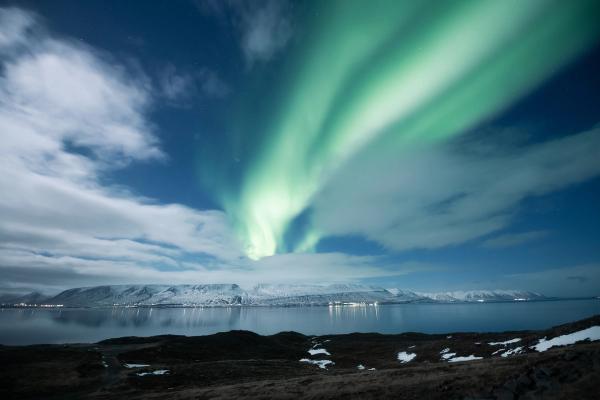
The Alternative: Tröllaskagi Peninsula
If you’re in Iceland to experience as much of the winter landscapes as you can, then we suggest skipping over Akureyri and instead taking some time to explore the Tröllskagi Peninsula that juts out to the north. Three quiet fishing villages are strung along its eastern coast, but the real attraction here are the epic landscapes and the drive. The road loops all the way around to Hofsós, location of a great local swimming pool on the edge of the fjord.
Day 7: Towards Reykjavik
If you’re in the country for just a week, it’s time to make the drive back towards Reykjavik and drop off the camper. It takes about 3 hours to drive from Blönduós, but we recommend ducking into the west to visit the waterfall Hraunfossar. Another wonderful geothermal hot spring called Krauma is also in the area. It’s one of the least visited pools in the country but also one of the classiest. Afterward, swing on back to Go Campers and let us know how your trip was.
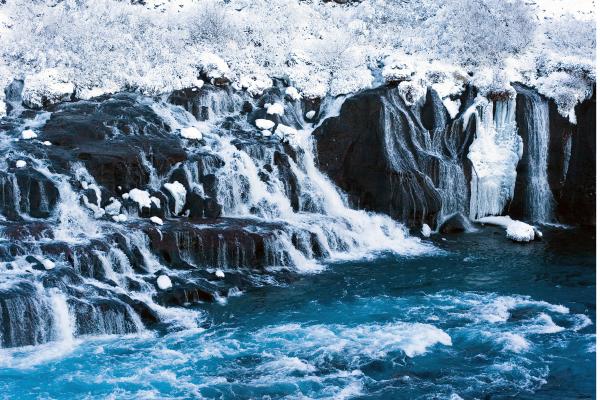
The Alternative: The Snæfellsnes Peninsula
If you’ve got more time to play around with, then the Snæfellsnes Peninsula is one of the most rewarding areas for traveling in a campervan during the winter.
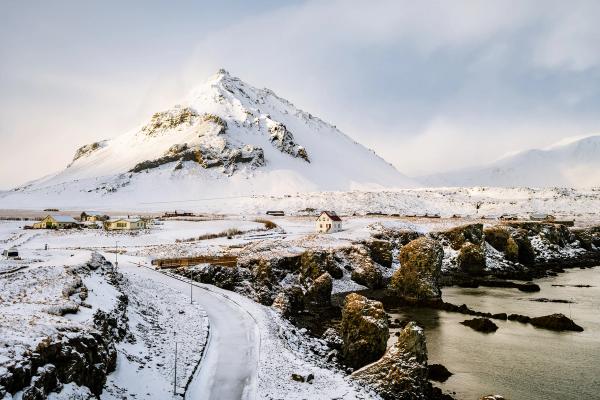
Conclusion
Winter in Iceland is unpredictable, but with the right planning, a campervan trip can be an incredible experience. From frozen waterfalls and black sand beaches to steaming hot springs and quiet fjords, every day brings something new. Whether you're chasing the northern lights, exploring ice caves, or just soaking in the views, winter travel in Iceland is all about being flexible and making the most of every moment. Keep an eye on the weather, have backup plans, and enjoy the adventure of the open road.
